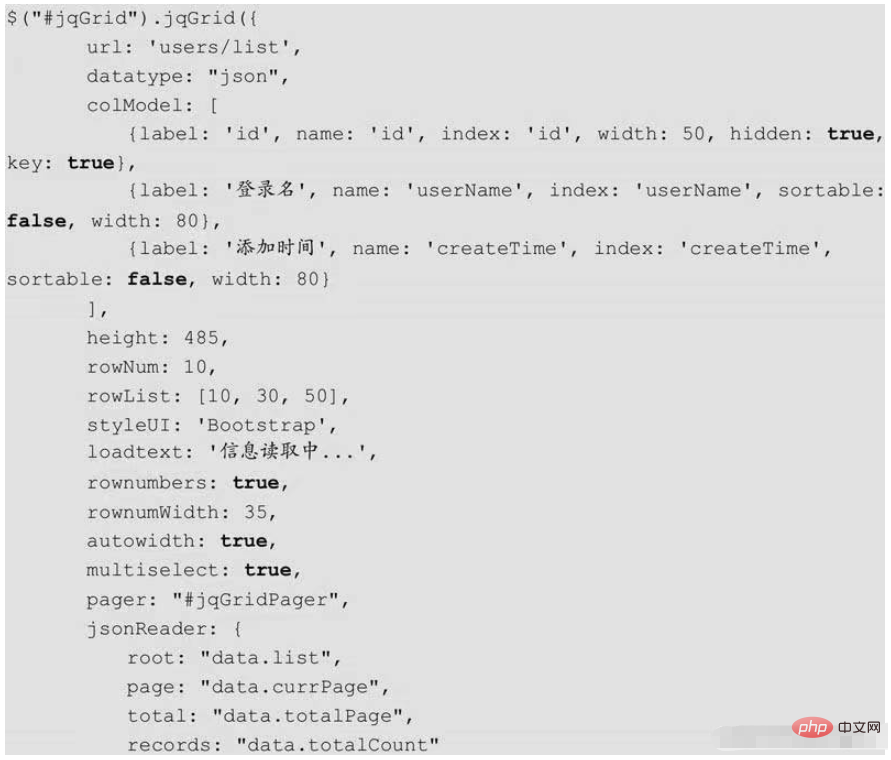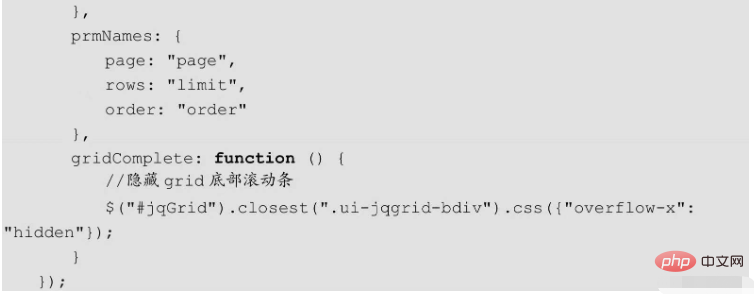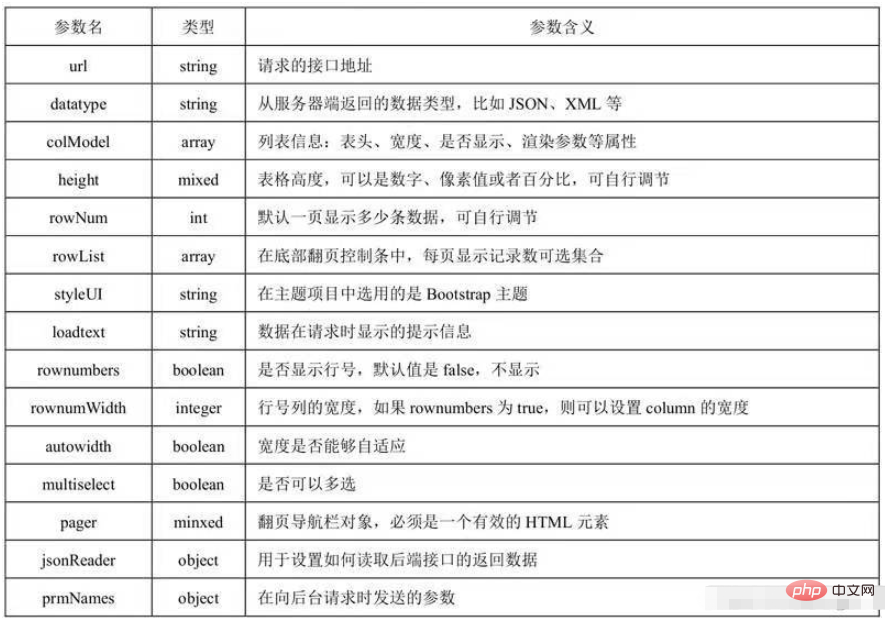페이징 기능은 다양한 웹사이트 및 시스템(바이두 검색결과 페이지 매김 등)에서 없어서는 안 될 부분으로, 페이지에 데이터 양이 많을 경우 페이징 기능이 반영됩니다. 그 기능은 다음과 같습니다: 아래 5개.
(1) 시스템 리소스 소비 감소
(2) 데이터베이스 쿼리 성능 향상
(3) 페이지 액세스 속도 향상
(4) 사용자의 탐색 습관 충족
(5) 적응 페이지 레이아웃
페이징 기능을 구현해야 하므로 더 많은 데이터가 필요합니다
DROP TABLE IF EXISTS tb_user;
CREATE TABLE tb_user (
id int(11) NOT NULL AUTO_INCREMENT COMMENT '主键id',
name varchar(100) NOT NULL DEFAULT '' COMMENT '登录名',
password varchar(100) NOT NULL DEFAULT '' COMMENT '密码',
PRIMARY KEY (id) USING BTREE
) ENGINE = InnoDB CHARACTER SET = utf8;
insert into tb_user (id,name,password)
value (1,'C','123456'),
(2,'C++','123456'),
(3,'Java','123456'),
(4,'Python','123456'),
(5,'R','123456'),
(6,'C#','123456');
insert into tb_user (id,name,password) value (7,'test1','123456');
insert into tb_user (id,name,password) value (8,'test2','123456');
insert into tb_user (id,name,password) value (9,'test3','123456');
insert into tb_user (id,name,password) value (10,'test4','123456');
insert into tb_user (id,name,password) value (11,'test5','123456');
insert into tb_user (id,name,password) value (12,'test6','123456');
insert into tb_user (id,name,password) value (13,'test7','123456');
insert into tb_user (id,name,password) value (14,'test8','123456');
insert into tb_user (id,name,password) value (15,'test9','123456');
insert into tb_user (id,name,password) value (16,'test10','123456');
insert into tb_user (id,name,password) value (17,'test11','123456');
insert into tb_user (id,name,password) value (18,'test12','123456');
insert into tb_user (id,name,password) value (19,'test13','123456');
insert into tb_user (id,name,password) value (20,'test14','123456');
insert into tb_user (id,name,password) value (21,'test15','123456');
insert into tb_user (id,name,password) value (22,'test16','123456');
insert into tb_user (id,name,password) value (23,'test17','123456');
insert into tb_user (id,name,password) value (24,'test18','123456');
insert into tb_user (id,name,password) value (25,'test19','123456');
insert into tb_user (id,name,password) value (26,'test20','123456');
insert into tb_user (id,name,password) value (27,'test21','123456');
insert into tb_user (id,name,password) value (28,'test22','123456');
insert into tb_user (id,name,password) value (29,'test23','123456');
insert into tb_user (id,name,password) value (30,'test24','123456');
insert into tb_user (id,name,password) value (31,'test25','123456');
insert into tb_user (id,name,password) value (32,'test26','123456');
insert into tb_user (id,name,password) value (33,'test27','123456');
insert into tb_user (id,name,password) value (34,'test28','123456');
insert into tb_user (id,name,password) value (35,'test29','123456');
insert into tb_user (id,name,password) value (36,'test30','123456');
insert into tb_user (id,name,password) value (37,'test31','123456');
insert into tb_user (id,name,password) value (38,'test32','123456');
insert into tb_user (id,name,password) value (39,'test33','123456');
insert into tb_user (id,name,password) value (40,'test34','123456');
insert into tb_user (id,name,password) value (41,'test35','123456');
insert into tb_user (id,name,password) value (42,'test36','123456');
insert into tb_user (id,name,password) value (43,'test37','123456');
insert into tb_user (id,name,password) value (44,'test38','123456');
insert into tb_user (id,name,password) value (45,'test39','123456');
insert into tb_user (id,name,password) value (46,'test40','123456');
insert into tb_user (id,name,password) value (47,'test41','123456');
insert into tb_user (id,name,password) value (48,'test42','123456');
insert into tb_user (id,name,password) value (49,'test43','123456');
insert into tb_user (id,name,password) value (50,'test44','123456');
insert into tb_user (id,name,password) value (51,'test45','123456');유틸 패키지를 생성합니다. 패키지의 새로운 Result 일반 결과 클래스 코드는 다음과 같습니다.
package ltd.newbee.mall.entity;
public class User {
private Integer id;
private String name;
private String password;
public Integer getId() {
return id;
}
public void setId(Integer id) {
this.id = id;
}
public String getName() {
return name;
}
public void setName(String name) {
this.name = name;
}
public String getPassword() {
return password;
}
public void setPassword(String password) {
this.password = password;
}
}백엔드 인터페이스에서 반환된 데이터는 비즈니스 코드, 반환 정보 및 실제 데이터 결과를 포함하여 위 형식에 따라 캡슐화됩니다. 이 형식은 개발자가 직접 설정하며 다른 더 나은 솔루션이 있는 경우 적절하게 조정할 수 있습니다.
util 패키지에 새로운 PageResult 일반 결과 클래스를 생성합니다. 코드는 다음과 같습니다:
package ltd.newbee.mall.util;
import java.util.List;
/**
* 分页工具类
*/
public class PageResult {
//总记录数
private int totalCount;
//每页记录数
private int pageSize;
//总页数
private int totalPage;
//当前页数
private int currPage;
//列表数据
private List<?> list;
/**
*
* @param totalCount 总记录数
* @param pageSize 每页记录数
* @param currPage 当前页数
* @param list 列表数据
*/
public PageResult(int totalCount, int pageSize, int currPage, List<?> list) {
this.totalCount = totalCount;
this.pageSize = pageSize;
this.currPage = currPage;
this.list = list;
this.totalPage = (int) Math.ceil((double) totalCount / pageSize);
}
public int getTotalCount() {
return totalCount;
}
public void setTotalCount(int totalCount) {
this.totalCount = totalCount;
}
public int getPageSize() {
return pageSize;
}
public void setPageSize(int pageSize) {
this.pageSize = pageSize;
}
public int getTotalPage() {
return totalPage;
}
public void setTotalPage(int totalPage) {
this.totalPage = totalPage;
}
public int getCurrPage() {
return currPage;
}
public void setCurrPage(int currPage) {
this.currPage = currPage;
}
public List<?> getList() {
return list;
}
public void setList(List<?> list) {
this.list = list;
}
}두 개의 새로운 메소드 findUsers() 및 getTotalUser() 추가 UserDao 인터페이스에서 코드는 아래와 같습니다:
/**
* 返回分页数据列表
*
* @param pageUtil
* @return
*/
List<User> findUsers(PageQueryUtil pageUtil);
/**
* 返回数据总数
*
* @param pageUtil
* @return
*/
int getTotalUser(PageQueryUtil pageUtil);UserMapper에 이 두 메소드의 매핑 문을 추가합니다. 표시:
<!--分页-->
<!--查询用户列表-->
<select id="findUsers" parameterType="Map" resultMap="UserResult">
select id,name,password from tb_user
order by id desc
<if test="start!=null and limit!=null">
limit #{start}.#{limit}
</if>
</select>
<!--查询用户总数-->
<select id="getTotalUser" parameterType="Map" resultType="int">
select count(*) from tb_user
</select>4.3 제어 계층
페이징 요청을 처리하고 쿼리 결과를 반환하는 데 사용되는 새로운 PageTestController 클래스를 컨트롤러 패키지에 생성합니다. 코드는 다음과 같습니다.
import ltd.newbee.mall.dao.UserDao;
import ltd.newbee.mall.entity.User;
import ltd.newbee.mall.util.PageResult;
import ltd.newbee.mall.util.PageQueryUtil;
import org.springframework.beans.factory.annotation.Autowired;
import org.springframework.stereotype.Service;
import java.util.List;
@Service
public class UserService {
@Autowired
private UserDao userDao;
public PageResult getUserPage(PageQueryUtil pageUtil){
//当前页面中的数据列表
List<User> users = userDao.findUsers(pageUtil);
//数据总条数,用于计算分页数据
int total = userDao.getTotalUser(pageUtil);
//分页信息封装
PageResult pageResult = new PageResult(users,total,pageUtil.getLimit(),pageUtil.getPage());
return pageResult;
}
}5.jqGrid 페이징 플러그인
jqGrid는 그리드 데이터를 표시하는 데 사용되는 jQuery 플러그인입니다. 개발자는 jqGrid를 사용하여 프런트 엔드 페이지와 백그라운드 데이터 간의 Ajax 비동기 통신을 쉽게 구현하고 페이징 기능을 구현할 수 있습니다. 동시에 jqGrid는 오픈 소스 페이징 플러그인이며 소스 코드는 반복적인 업데이트 상태에 있습니다.
jqGrid를 다운로드한 후 파일의 압축을 풀고 압축을 푼 파일을 프로젝트의 정적 디렉터리에 직접 드래그합니다.
다음은 jqGrid에서 페이징을 구현하는 단계입니다. 먼저 jqGrid를 소개합니다. 페이징 인 프론트 엔드 페이지 코드 플러그인에 필요한 소스 파일, 코드는 다음과 같습니다.
먼저 jqGrid를 소개합니다. 페이징 인 프론트 엔드 페이지 코드 플러그인에 필요한 소스 파일, 코드는 다음과 같습니다.
@RestController
@RequestMapping("users")
public class PageTestController {
@Autowired
private UserService userService;
//分页功能测试
@RequestMapping(value = "/list",method = RequestMethod.GET)
public Result list(@RequestParam Map<String,Object> params){
Result result = new Result();
if (StringUtils.isEmpty(params.get("page"))||StringUtils.isEmpty(params.get("limit"))){
//返回错误码
result.setResultCode(500);
//错误信息
result.setMessage("参数异常!");
return result;
}
//封装查询参数
PageQueryUtil queryParamList = new PageQueryUtil(params);
//查询并封装分页结果集
PageResult userPage = userService.getUserPage(queryParamList);
//返回成功码
result.setResultCode(200);
result.setMessage("查询成功");
//返回分页数据
result.setData(userPage);
return result;
}
}두 번째로 페이지에서 페이징 데이터를 표시해야 하는 영역에 jqGrid 초기화를 위한 코드를 추가합니다.
<link href="plugins/jqgrid-5.8.2/ui.jqgrid-bootstrap4.css" rel="external nofollow" rel="stylesheet"/> <!--jqGrid依赖jQuery,因此需要先引入jquery.min.js文件,下方地址为字节跳动提供的cdn地址--> <script src="http://s3.pstatp.com/cdn/expire-1-M/jquery/3.3.1/jquery.min.js"></script> <!--grid.locale-cn.js为国际化所需的文件,-cn表示中文--> <script src="plugins/jqgrid-5.8.2/grid.locale-cn.js"></script> <script src="plugins/jqgrid-5.8.2/jquery.jqGrid.min.js"></script>
마지막으로 jqGrid 페이징 플러그인의 jqGrid() 메소드를 호출하여 페이징 표시 영역을 렌더링합니다. 코드는 다음과 같습니다.


 resources/static 디렉토리에 새 jqgrid-page-test.html 파일을 만듭니다. 코드는 다음과 같습니다.
resources/static 디렉토리에 새 jqgrid-page-test.html 파일을 만듭니다. 코드는 다음과 같습니다.
<!--jqGrid必要DOM,用于创建表格展示列表数据--> <table id="jqGrid" class="table table-bordered"></table> <!--jqGrid必要DOM,分页信息区域--> <div id="jqGridPager"></div>
jqGrid 초기화
새 jqgrid 만들기- resources/static 디렉토리 -test.js 파일의 페이지에서 코드는 다음과 같습니다:
<!DOCTYPE html>
<html>
<head>
<meta charset="UTF-8">
<title>jqGrid分页测试</title>
<!--引入bootstrap样式文件-->
<link rel="stylesheet" href="/static/bootstrap-5.3.0-alpha3-dist/css/bootstrap.css" rel="external nofollow" />
<link href="jqGrid-5.8.2/css/ui.jqgrid-bootstrap4.css" rel="external nofollow" rel="stylesheet"/>
</head>
<body>
<div >
<!--数据展示列表,id为jqGrid-->
<table id="jqGrid" class="table table-bordered"></table>
<!--分页按钮展示区-->
<div id="jqGridPager"></div>
</div>
</body>
<!--jqGrid依赖jQuery,因此需要先引入jquery.min.js文件,下方地址为字节跳动提供的cdn地址-->
<script src="http://s3.pstatp.com/cdn/expire-1-M/jquery/3.3.1/jquery.min.js"></script>
<!--grid.locale-cn.js为国际化所需的文件,-cn表示中文-->
<script src="plugins/jqgrid-5.8.2/grid.locale-cn.js"></script>
<script src="plugins/jqgrid-5.8.2/jquery.jqGrid.min.js"></script>
<script src="jqgrid-page-test.js"></script>
</html>위 내용은 springboot 페이징 기능 구현 방법의 상세 내용입니다. 자세한 내용은 PHP 중국어 웹사이트의 기타 관련 기사를 참조하세요!